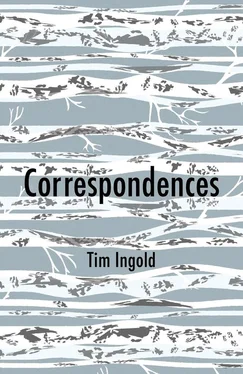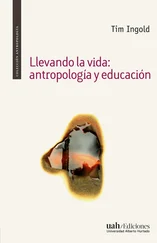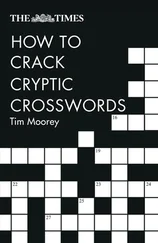Imagine a future in which all written words are tapped out, on keyboards or screens. To read these words requires a vision that cuts through paper or glass, in order to extract the meanings reflected from behind, rather than allowing itself to be detained at the surface. The linear traces of affect, which had once captivated the eyes of readers, are now written off as a distraction. They have been replaced by a vocabulary of emoticons, presenting surrogates for feeling rather than feeling in itself. With the expressive power of the line long forgotten, next to go will be the voice. The authorities have decreed that the musical qualities of vocal pronunciation, which had once so enchanted listeners as to lure them to follow along, or even join in, are held to distract from what is now believed to be the proper function of words, to convey information. So the voice is to be replaced by digital synthesizers, operated by neurotransmitters from the brain. In this brave new world, the lullaby, the lament, the carol and the hum, eviscerated of affect, are to be preserved in aspic, as mementos of a bygone past. Deprived of voice, people lose the capacity to sing. But this only compounds the earlier suppression of the hand, in the loss of its capacity to write. A society without handwriting is like one from which song has been banished. Yet it would take only a simple invention to bring it back: a hand-held tube, fitted with a tip and filled with dark-hued liquid. No digital interface can match the expressive potential and versatility of this instrument. Cheap, easy to use, requiring no external power supply, and leaving no pollution in its wake, it could secure the future of writing for countless years to come.
I sometimes wonder where philosophers have been, all these years. Some of their number have recently taken to telling us – as though it were a startling new discovery – that the world does not actually revolve around human beings, and that non-human entities of all sorts can enter into relations with one another, and even hold meanings for one another, which do not depend in the slightest on how they are used or perceived by humans, or even on any human presence at all. The fact that researchers in such fields as plant and animal ecology, geomorphology and soil science have been studying such relations for generations seems to have passed our philosophers by. Of course we have good reason to question the premises that underpin such scientific endeavours. For the most part they assume that the world of nature already exists ‘out there’, like an unmapped continent, and is simply waiting for us humans to discover it. There is certainly something duplicitous about the claims of science to account for the workings of nature, including the mind as part of nature, given that such claims derive their authority from the sovereign perspective of a mind that has already set itself on a pedestal, over and above the nature it purports to explain. That’s why, despite denials that for any species there exists an essence of its kind, science cannot escape the assumption that there is something exceptional about humans – something that lifts them up and over the natural world. It cannot escape this assumption because the entire scientific project depends on it. It’s the elephant in the room, invisibly presiding over the science of non-human conviviality, amidst disavowals of its presence and influence.
But philosophers who call for a more balanced or ‘symmetrical’ approach, which would allow the participation of non-humans with humans on a level playing field, are no less two-faced. We humans, they say, are not in a world of our own. To the contrary, we share our world with an almost unimaginable variety of non-human kinds, forming relationships with and among them that ramify through ever-extending networks of influence and agency. And yet, at the centre of any network, you will always find a human. Why? Because human beings, according to those who take this view, are unique among living creatures in the extent to which they have the capacity to enrol other kinds into their own lifeways. They do so in their extensive use of inanimate objects as tools or for the manufacture of artefacts, in the domestication of plants and animals to suit their purposes, and through sundry other interventions. Thus humankind is posited as the pivot around which the balance of the human and the non-human turns. Yet the pivot is itself founded in one of the most potent myths of modernity. It is the myth of how, many millennia ago, the distant ancestors of modern-day humans broke the bonds of nature that hold all other animals captive, and launched themselves on the path of history. Paradoxically, an approach which purports to dismantle the distinction between the human and the non-human, and to level the playing field, is justified on the grounds that in their manner of engagement with material things, and in the progressive history of that engagement, human beings are radically distinct from all other living kinds. Hardly could a symmetrical approach rest on a more asymmetrical foundation! 2
The truth is that in a more-than-human world, nothing exists in isolation. Humans may share this world with non-humans, but by the same token, stones share it with non-stones, trees with non-trees and mountains with non-mountains. Yet where the stone ends and its contrary begins cannot be ascertained with any finality. The same goes for the tree and the mountain, even for the human. It is a condition of life that everything leaks, and nothing is locked in. Of course we can tell things apart. Ask me to point to another human being, or to a stone, a tree or a mountain, and I can readily do so. But what I’m pointing to is not an entity that is in any sense self-contained. My attention is rather directed towards a place from which I see something happening, a going-on that spills out into its surroundings, including myself. I see the stone in its stoning, the tree in its arborescence, the mountain in its rising and falling. Even a fellow human being I see in his or her humaning. We should replace our nouns for naming things with verbs: ‘to stone’, ‘to tree’, ‘to mountain’, ‘to human’. At once the world we inhabit, and that we share with so many other things, no longer appears ready-cut, into things of this sort or that, along the lines of a classification. Instead we find ourselves pitched into a world in which things are ever-differentiating from one another along the folds and creases of their formation. Everything has – or, better, is – the story of its differentiation. Thus the story of a stone, a tree or a mountain, like the story of a human being, is also the story of those things or beings that, over time, become other to it – the moss, the bird, the mountaineer.
Only when we appreciate things as their stories can we begin to correspond with them. So you, the reader, should practise this way of seeing before embarking upon the following essays. We are so used to taking a rearward view, to capturing things a moment too late, when they have already settled into the shapes and categories assigned to them. As in the game of grandmother’s footsteps, the world creeps up on us behind our backs, but freezes on the instant when we turn around to look. To correspond we need to go behind the scenes, to join with the creepers and to move along with them in real time. Immediately upon doing so, what grandmother sees only as statues come vibrantly to life. The statue is already cast, but the creepers are alive in the casting. Theirs is a stance not of being but of becoming. Corresponding with them calls for a shift, as philosophers would say, from ontology to ontogeny. Ontology is about what it takes for a thing to exist, but ontogeny is about how it is generated, about its growth and formation. This shift, moreover, has important ethical implications. For it suggests that things are far from closed to one another, each wrapped up in its own, ultimately impenetrable world of being. On the contrary, they are fundamentally open, and all participate in one indivisible world of becoming. Multiple ontologies signify multiple worlds, but multiple ontogenies signify one world. Since, in their growth or movement, the things of this world respond to one another, they are also responsible. And in this one world of ours, responsibility is not for some but not others. It is a burden that all must carry.
Читать дальше












